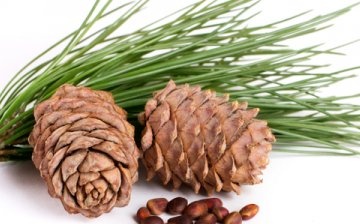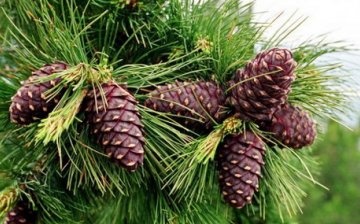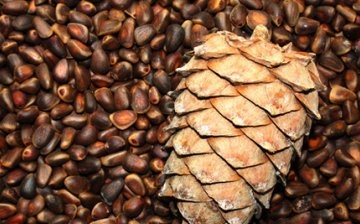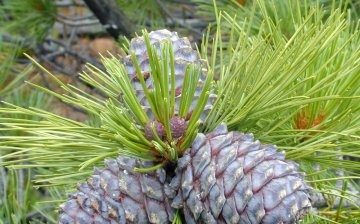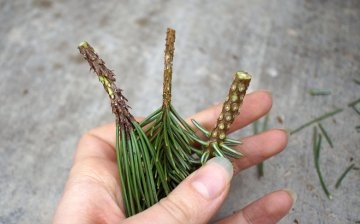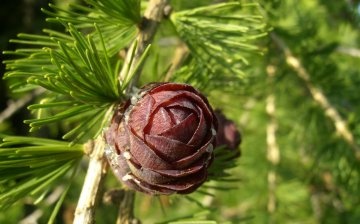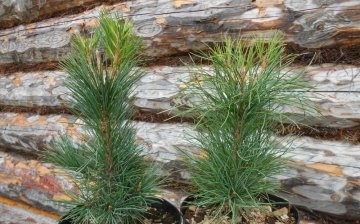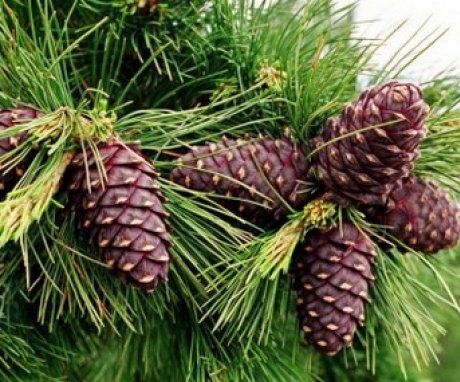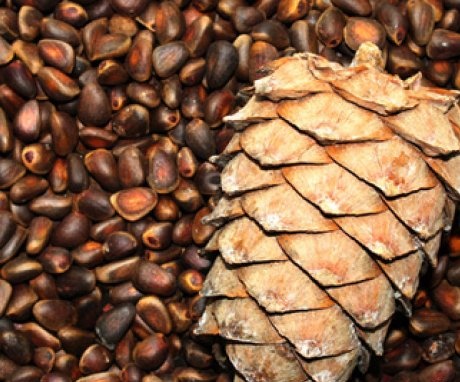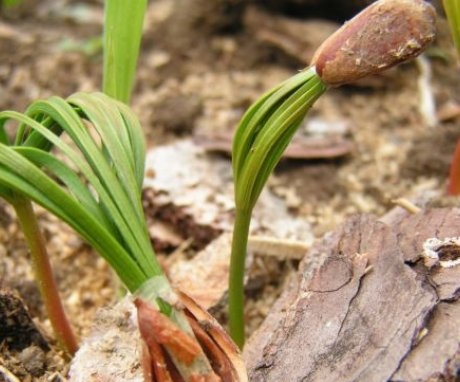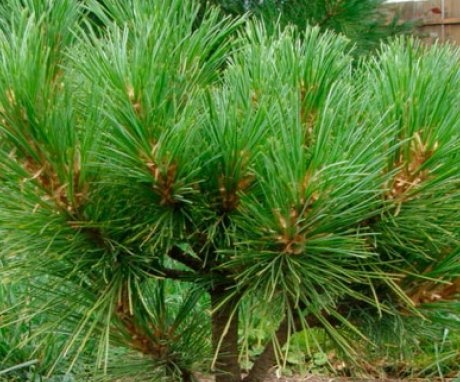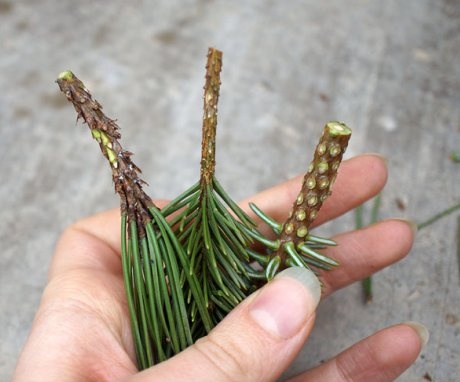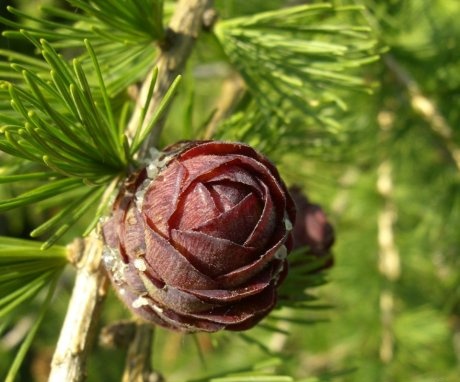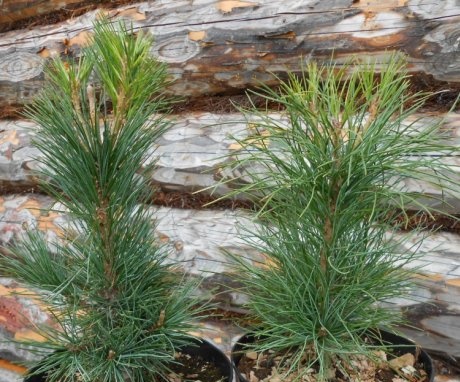Growing a cedar from a nut - easy and simple
Siberian cedar is an ornamental plant with tasty fruits. These fruits - pine nuts - are very healthy. How to grow a tree from a small nut? Some hobbyists try to grow cedar from walnut. Growing this coniferous tree requires a lot of skill and knowledge. You can grow a cedar yourself in two ways: from a seedling and a nut.
Content:
- General recommendations for growing cedar
- Preparation and stratification of cedar seeds (nuts)
- Planting nuts
- Planting and caring for seedlings
- Cedar crown formation
- Propagation of cedar by cuttings
- Pollination of a cedar tree
- Growing cedar with a ready-made seedling
General recommendations for growing cedar
In our country, cedar has been cultivated for a long time. Many trees are planted by amateur gardeners. Keep in mind when planting that cedar cannot grow in dry places with sandy soil. Cedar reproduces vegetatively, by grafting a cuttings onto an ordinary pine, but the main way is reproduction seeds (nuts). The plant has to be grown under a protective film, since the newly emerged seedlings are pecked by crows.
Good results can be obtained by sowing seeds in the fall.
It is necessary to sow the seeds in a prepared place a month before the soil freezes (around the end of September), and then cover them with spruce paws so that rodents do not eat them. In the spring, the seeds will sprout.
Consider the features of the Siberian cedar when planting:
- This tree is extremely sensitive to bad air. It is because of this that you should not plant cedars near large enterprises or in places where there is a lot of dust in the air.
- In addition to good air, large seedlings require regular feeding.
The cedar grows for a very long time, so even after two hundred years the tree will delight you with delicious nuts.
Preparation and stratification of cedar seeds (nuts)
It is best to bring the seeds cedar from low-mountain or lowland regions of Western Siberia. It is best to start growing cedar seeds in the spring, but you need to stratify them first.
There is another way of sowing seeds - in the spring. But for this you need them stratify:
- Soak the seeds in warm water for about four or six days, and change the water every two days.
- Mix the seeds with washed river sand or peat crumbs, keep at a not too high temperature.
- This mixture should be stirred from time to time and well moistened. If the seeds are stratified in this way, they will hatch in fifty days.
- Next, you need to take the seeds out to the cold and store them at a temperature of about zero degrees to sowing.
This is a more scientific way of stratification. Here are some tips from experienced people:
- Saturate the cedar nuts with moisture. This will also help to wash out all substances from the seeds that prevent them from germinating. Pour the nuts into a bowl and cover with hot water. After an hour, the nuts will be soaked and can be washed. Just rub them together.
- After the seeds are rinsed, cover them with warm water and let sit for two hours. Then wash the nuts and change the water again. This procedure must be repeated throughout the day.
- Next, the wet seeds need to be laid out in glass jars. It is best to fill the jars only halfway. Make sure to make a hole in the lid to allow air to flow to the seeds. Then find a place where the temperature does not drop below zero, for example, a cellar is perfect. If you put cans of nuts in the refrigerator, the effect will be worse.
Planting nuts
If you want to sow the seeds in the spring, then do it in early May. Sow no more than three hundred grams of seeds per square meter. Cover the seeds three centimeters deep. Be sure to cover the seeds with plastic, if you don't, the birds will pick off all the nuts. The film can be removed only after the shells have fallen off the seedlings. So, after planting, the seeds will sprout.
If the seedlings are too thick, then you need them dive... The sprouts will look like an arc. Once they appear, dig them up, trim the roots and plant them under a peg. Planting depth should be the same at which they grew before transplants... You can make a pick of seedlings in the second year after they sprout. If you observe all the agrotechnical subtleties, then after the pick, the seedlings will take root with a probability of 95 percent. After two or three years, wonderful material will turn out and the sprouts can be transplanted to a new place.
You need to plant seedlings immediately in a permanent place.
It must be sufficiently lit. You need to plant cedars at a distance of five meters from each other. You can plant any berry or fruit bushes between conifers. You can sow lupines next to cedars - it will serve as a natural fertilizer and will help the plant develop better. It is great if you water the soil around the tree, adding at the same time as watering mineral fertilizers... In the spring they need to be replaced with organic ones.
Planting and caring for seedlings
Tips for planting cedar seedlings:
- It is necessary to plant grown plants in loosened, un-sodded sandy loam or loamy soil.
- The planting hole should be about one third larger than the roots seedlings.
- The soil that you removed from the hole must be mixed with either peat, or wood ash, or manure, or humus.
- It would also be nice to add three handfuls of coniferous forest bedding. The litter will help to better develop the interaction of the fungal hyphae from the forest and the root endings, which ensures good nutrition for the cedar.
- Pour this mixture into the bottom of the hole and plant a seedling.
- Fill the hole with loose earth, compact and water.
- Landing sites should be placed in groups at a distance of at least three meters or in a linear fashion.
- You can place seedlings according to the scheme 5x5 meters or 4x5 meters. Such planting methods will provide sufficient lighting for the growth and development of trees, and the cedars will not touch each other with their paws, that is, the crown will form well, the yield of cones will be large in the future.
Cedar can begin to yield cones from the age of eighteen. When a white bloom appears on young shoots (usually it appears when there is an excess of moisture in the air), be sure to treat the plants with a solution of household soap. Dilute the soap in warm water, beat the lather, then wash the diseased shoots with a sponge or soft cloth.
If you do not carry out this procedure, whiteness will actively develop, and the plants will die. The tree will not die, but it will lose its annual growth. Be sure to add mineral (autumn) and organic (spring) to the soil fertilizers... This will help the tree develop better.
Cedar crown formation
Be sure to start taking care of the crown shape immediately after transplants... It is best to form "garden forms". The plant will be multi-peaked, spreading and low-pubescent. It is necessary to cut the lower branches to a height of up to two meters in the first ten to fifteen years of the plant's life.
Anoint the cuts with garden varnish so that spores of wood-destroying fungi do not become infected.
Pruning a tree may not be carried out if the late buds on the main shoot are broken out for the first three years after planting a two-year-old seedling. In this case, all the substances nourishing the tree will enter the main bud. In this case, the growth of this shoot will double in six months, and the need to cut the branches of the cedar will disappear. It is better to break out the buds in the fall or winter.
If the needles are dark green, it means that the cedar has taken root well. An increase of at least five centimeters per year will also be a positive signal.
Propagation of cedar by cuttings
If you liked some form of cedar, for example, this particular plant turned out to be the fastest growing, most beautiful, gave the largest harvest, it can be cloned. This is what this form is used for. breeding, like propagation by grafting cedar cuttings onto a pine tree. A mature plant will develop from the scion, and after five years cones will appear on such a tree.
Cedar cuttings should be rooted in a special greenhouse in the same way as, for example, spruce cuttings are rooted.
This process is quite difficult. It is quite difficult to propagate cedar vegetatively, and it will not be easy for a non-specialist to cope with such a procedure. Cedar can produce seeds, and this is a wonderful benefit of this plant. Cedar cones begin to form in about nineteen years if the tree is grown from a nut tree.
Pollination of a cedar tree
Cedar is a monoecious plant. In the most illuminated areas of the crown, female kidneys are located, and below, male ones. The tree begins to "bloom" in early summer. The "female" cones are crimson and seem to be hiding in the needles near the upper bud. The "flowers" of the male are raspberry-orange in color, they are collected near the bases of the shoot. After about four days, the flowers turn brown and fall off. The pollen is carried by the wind.
After pollination, female cones close and acquire a green-brown color.
Seeds fertilized and formed in early autumn. It is because of wind pollination that it is best to have several cedars on the site. To know that the plant will definitely yield a crop, you can pollinate it yourself: shake the pollen from the male "flowers" onto a sheet of paper, pour it into a container and put the container in the refrigerator. When you see that the female "flowers" began to open, blow off pollen on them or apply it to the "flowers" with a soft brush.
Growing cedar with a ready-made seedling
If you don't feel like messing around with seeds, then you can try to find ready-made seedlings... Yes, they will cost more, but less hassle with them. Try to contact the nearest forestry, where you can buy two-year-old seedlings. Sometimes, if the forestry workers allow it, you can independently dig out cedar seedlings. You need to dig it out carefully, after which it is necessary to moisten the seedlings. Plant the plants the same day. At least dig in the seedlings if it is impossible to plant them.
The most common mistakes:
- Breaking off main roots
- Gross damage
- Drying the roots with prolonged exposure to air
One of the mistakes often made by gardeners is planting a plant one by one. Conifers are wind-pollinated, and their pollen is carried from one plant to another. Pollination can also occur inside crowns, but then the seeds can either not set at all, or ripen very small. Be aware that cedar can grow and bear fruit for several centuries. For example, there are cases when cedars grew for four centuries.
The cedar grows fast enough. In a year, with proper care, it can grow up to forty centimeters in height. If you grow a cedar at home, that is, in a summer cottage, and also provide him with suitable conditions, then he will bear fruit every four years, whereas in the wild, due to a lack of sunlight, every seven years.
The peak of fruiting occurs in the century of the tree.
From a developed plant, you can collect up to fifteen kilograms of nuts. In cultivated species, the nuts are larger than in wild cedars.
More information can be found in the video.



